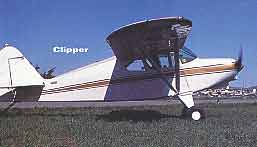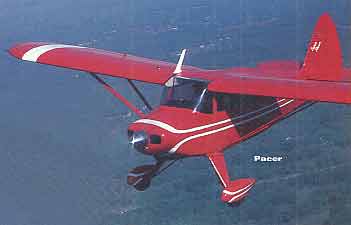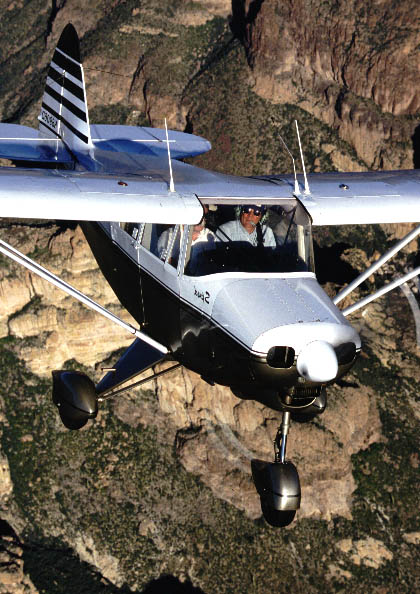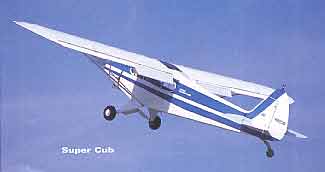PA-15, PA-17 Vagabond
In 1947 it was Panic City in every airframe manufacturing plant and the order came down from Piper management to build the cheapest, two-place general-use airplane they could and to do it using nothing but materials already on hand and as little of that as possible. For that reason everything about the PA-15 Vagabond was made smaller and simpler. They even went so far as to use military surplus mag switches. The wings were minimized (six feet shorter), as was the fuselage, which gave birth to the short wing Piper.
The name “Vagabond” is applied to two different Piper designations, the PA-15 and the PA-17. The airplanes are nearly identical and are almost naive in their low-tech approach to flight, but they are great fliers. The differences between the two included adding a right side control stick in the –17 as well as replacing the –15’s ultra-simple, rigid landing gear with a more conventional bungee system. Originally equipped with the 65 hp Continental, many are seen with 75hp or 85 hp engines, which greatly improve the climb performance.
 PA-16 Clipper
PA-16 Clipper
Where the Vagabond started the short-wing ball rolling, it is the Clipper, produced only in1949, that set the shape of things to come. A true four-place airplane with a right side door for the front and a left side door for the back, the little bugger moved right along on 115 hp. It still had sticks, rather than control yokes, and got most of its performance out of its light weight. These are great buys because all but the super-restored birds sell for $16-$22K and a few even drop below $15K.
 PA-20 Pacer
PA-20 Pacer
This is the Clipper gone one better. The engine became a 125 or 135 hp 0-290 Lycoming and the sticks were heaved in favor of a pair control yokes. The airplane grew flaps and Piper layered on some cosmetic cockpit treatments that gave it a more finished look.
With its short fuselage and higher-than-a-Cub touchdown speeds, the airplanes rapidly gained a reputation of being a little quick on the runway, but these days that doesn’t seem to be a problem—each year dozens of Tri-Pacers get a “nosewheelectomy” to make them into Pacers because of their sporty appearance and handling.
The Pacer never got the 150/160 hp Lycoming of the Tri-Pacer so they
are a little underpowered when loaded to gross, but that’s as much a
function of the environment, as the airplane: short wings don’t like
high density altitudes.
 |
PA-22 Tri-Pacer
The Tri-Pacer is a solid, easy to fly airplane that in the 150-160
hp versions actually is a pretty good four-place airplane, although the
backseat is a little small and dark. Their reputation is one of being fast
on final, but that’s not true. Yes, it is much faster than a Cessna but no different than a Cherokee. Also, it’ll
work out of a shorter field than many would believe.
It’s a solid 125-130 mph cruiser with the bigger engines and if the air
is even remotely smooth, you can put your hands in your lap and watch the
countryside go by. $18-$25K buys all sorts of Tri-Pacers and none of them
will disappoint so long as a thorough pre-buy inspection is done.
PA-22-l08 Colt
The Colt has to be one of the least known contemporary airplanes
built. Essentially, a stripped down, two-place Tri-Pacer it is the Vagabond
of the 1960’s. In fact, it flies a lot like a Vagabond and is just as much fun. It has to be an exceptional Colt for it’s price to be over $18K and you see them all the time in the $12-$14K range. Being a fabric airplane and one that isn’t
too popular at that, you can expect the lower range airplanes to be pretty
doggy.
The
Colt’s 108 hp, 0-235 engine is a solid motor that with minimal care will
run to TBO, so you can buy a Colt with a mid-time engine, fly it for a bunch
of years and sell it for what you paid for it after flying its wings off.
Summary-Do a careful inspection
All high-wing Pipers have steel tube airframes that are 40 to 60 years old and this is something to consider when buying one. If they were well taken care off, age is of no consequence, but the rag and tube Pipers all sat around as derelicts at some time in their lives. During that period of time moisture was continually trying to convert them to ferrous oxide. When doing the pre-buy inspection, hire an expert in the type to do the work.
The usual places for rust are at the rear of the fuselage in the taildraggers and inside the doorframes and in the strut carry-through in the belly of nose draggers. Also, these kinds of airplanes have lived in the land of the field mouse for decades and nesting mice can cause more damage then flying can.
So, when you decide you can’t live without a high-wing Piper, try to
find the best one available, or at the very least, do your best to determine
the true condition of an airframe before buying it. There is no substitute
for paranoia, when buying any airplane but on high-wing Pipers it will really
pay off.

Shortwing Piper Club
www.shortwing.org
220 Main Street
Halstead, KS 67056
 PA-16 Clipper
PA-16 Clipper PA-20 Pacer
PA-20 Pacer
